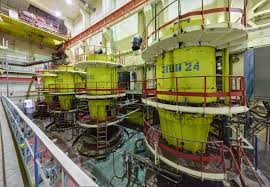The Chernobyl Disaster: A Thirty-Seven Year Reflection

Introduction
The Chernobyl disaster, which occurred on 26 April 1986, remains one of the most significant nuclear accidents in history. Understanding its impact is crucial as it not only reshaped nuclear policies globally but also prompted discussions about energy safety, environmental protection, and human health.
The Incident
The catastrophic explosion at reactor number four of the Chernobyl Nuclear Power Plant in Ukraine released massive amounts of radioactive particles into the atmosphere, affecting not only the nearby city of Pripyat but also spreading across Europe. It was later concluded that operator errors during a safety test, combined with poor reactor design, culminated in this incident. Emergency crews and first responders faced lethal levels of radiation while attempting to mitigate the situation.
Aftermath and Evacuations
In the immediate aftermath of the disaster, approximately 49,000 residents of Pripyat were evacuated in a hurried response to the escalating crisis. Over the following weeks, another 70,000 residents from surrounding areas were also relocated. The establishment of the Chernobyl Exclusion Zone, covering a 30-kilometre radius around the plant, aimed to restrict access to contaminated areas and to protect public health.
Health Implications
In the years following the disaster, studies revealed significant health impacts among those exposed to radiation. The World Health Organisation has estimated that thousands of cases of thyroid cancer occurred due to radioactive iodine released during the accident, particularly among children and adolescents at the time. Despite these findings, the long-term health effects remain a topic of extensive research and debate.
Continued Relevance
Thirty-seven years later, Chernobyl serves as an enduring symbol of the potential consequences of nuclear energy. The disaster has influenced global nuclear policies, leading to stricter safety protocols and greater emphasis on disaster preparedness. The event inspired subsequent investigations into nuclear energy, including the 1988 establishment of the International Atomic Energy Agency’s safety standards.
Conclusion
The lessons from the Chernobyl disaster continue to shape the global discourse on nuclear energy safety and environmental policy. As countries increasingly turn to nuclear power as a solution for climate change, the oversight and management of these energy resources become ever more critical. Reflecting on Chernobyl reminds us of the importance of safety, accountability, and the need for transparent communication in the nuclear energy sector.





